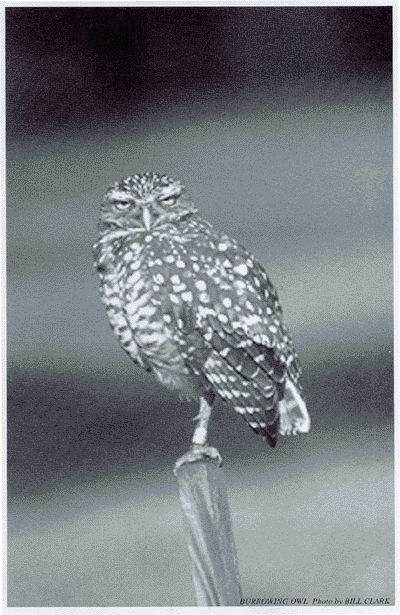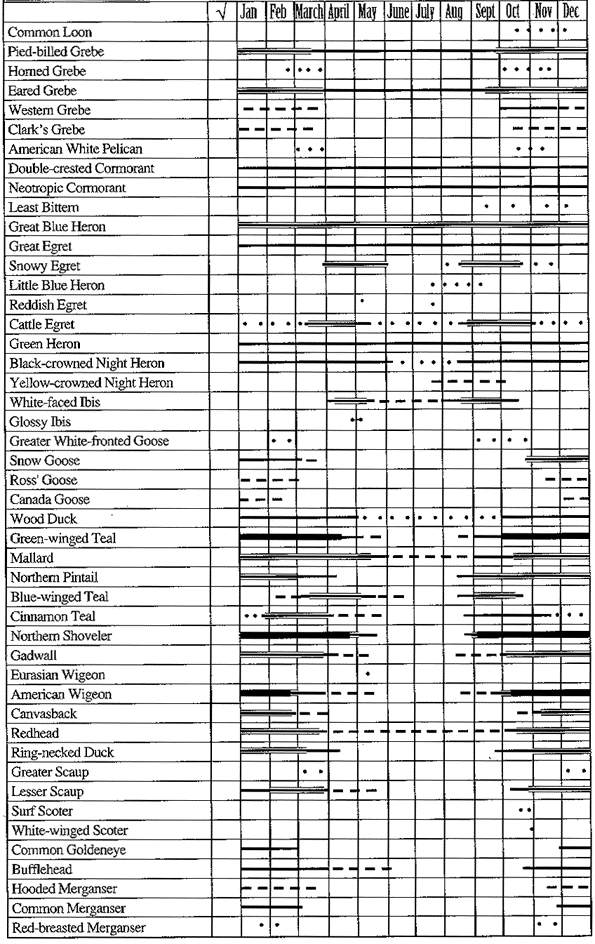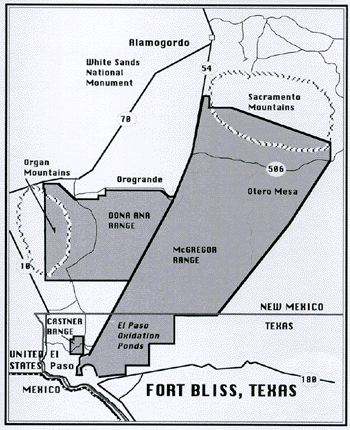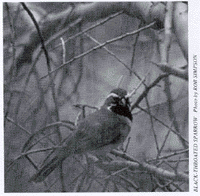
CHECK LIST OF BIRDS
FORT BLISS, TEXAS

BIRDS OF FORT BLISS
DATE:________________






U.S. ARMY RESOURCES MANAGEMENT
The Department of Defense manages more than 25 million acres worldwide. Much of this land is located in sensitive wetlands and along riverbanks, some of the most ecologically significant areas in the world. The location of these real estate holdings makes it imperative that the various military missions are planned and executed in harmony with the environment. DoD supports numerous partnerships with other Federal, State, local and private resource groups to promote such programs as the North American Waterfowl Management Plan, Neotropical Migratory Bird Conservation, Wetlands Protection and Enhancement, and Watchable Wildlife. To succeed in its mission, and to earn public confidence, DoD must emphasize natural resources stewardship in every aspect of its land use. It does. Come see for yourself and discover our resources.

FORT BLISS, TEXAS

FORT BLISS, TEXAS
Fort Bliss, established in 1848 as the Post of El Paso, has seen nearly 150 years of military history. The military mission has transformed from Indian fighting cavalry to advanced technical training in Air Defense Artillery. It is now home to the Army’s Air Defense School, the 6th, 108th, and 11th Air Defense Artillery Brigades, and the Sergeants Major Academy. While headquartered in El Paso, Texas, the majority of the 1.1 million acres of Fort Bliss is located in New Mexico.
Fort Bliss includes many different habitats due to the size of the installation and elevations which range from 3,818 to 8,832 feet. This diversity includes Chihuahuan Desert shrubland and grassland of several types, and Rocky Mountain shrublands and montane forests. Otero Mesa contains an extensive desert grassland. Wetland habitats are found at scattered springs, in playas, around earthen tanks and at oxidation ponds. This habitat diversity sustains a large number of plants and animals. Over 300 species of birds are found in the varied habitats on Fort Bliss. Notable mammals include the mountain lion, bobcat, ringtail cats, badgers, bats, deer, and a trophy antelope herd.
Natural Resource management supports the training mission by conserving the sustainability and native biological integrity of ecosystems. Biological inventories are ongoing, with emphasis on threatened and endangered species and sensitive biological areas. These data will be used by the Directorate of Environment to develop and improve management plans. Military mission precludes open access to much of Fort Bliss. Public access to these preserved habitats is limited to the Main Post area and to State Roads. Access to many other areas may be obtained by contacting Range Resource Development at 915-569-9211. For further information contact the Wildlife Management Team, Directorate of Environment, at 915-568-3016/3018.

The U.S. Army and Partners in Flight are cooperating on an international program to promote the conservation of migratory birds. For information, contact DoD Partners in Flight by email or call 540-349-9662.

